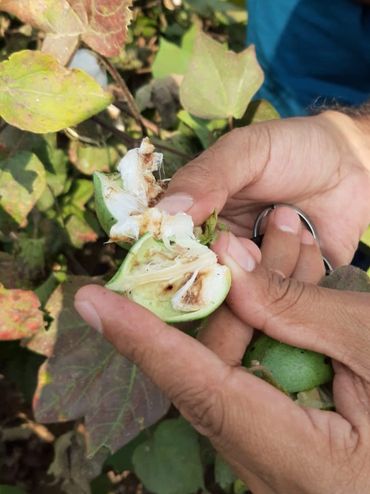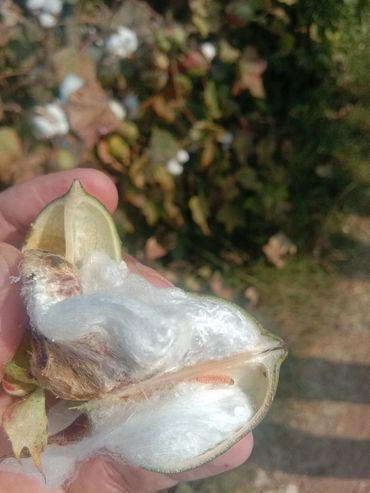EN
Translate:
EN
Signed in as:
filler@godaddy.com
EN
Translate:
EN
Signed in as:
filler@godaddy.com
We constantly invest in ways to make more, instead of finding ways to consume less. Our greed has taken us on a journey that is severely impacting nature and driving many species to extinction. Remember that, even though science has made enough advancement for man to dream of life on Mars, no scientific advancement can bring back a species that has gone extinct.
In India, there is a huge diversity of invertebrate yet insect taxonomy lags behind with only 25-30% documented. The good news is that a lot of research work is going on to study insects and their benefits to farming.
The challenges in developing countries like India are that the farm holdings are small, farming is labor intensive and poly-culture (growing multiple crops in the same space) is prevalent.
Thus, traditional IPM (Integrated Pest Management) techniques that are successful in developed countries may need to be adjusted to work on small farms and altered for the tropical climate.
Picture Credits: Vilayanoor Ramamurthy (Entomological Society of India), Surendra Singh (AMU), Abdul Rasheed War (ICRISAT), Mukesh Singh (Rajendra Prasad Central Agricultural University) and Hitul Awasthi
Paying tributes to Mahatma Gandhi

Majority of Indian farmers are unaware of the technical handling, proper use and safety of pesticides and herbicides. As a result, heavy doses are frequently used. Only 2 % of total application of pesticides reaches the targeted pest while the rest affects other organism or pollutes the soil and water bodies.
New insecticides are environmentally safer but more costly. Hence, farmers are using old generation pesticides which are extremely toxic and lethal to insects.
While Government institutes are beginning to research IPM, dominance of private sector pesticide companies at field level is delaying adoption of good IPM modules.
Separately, adoption of IPM is highly successful in big orchards. Majority of farmers have small land holdings. This contributes to farmers using more insecticides.
Land, especially arable land, is a limited resource.
As India's population continues to grow, people are cutting forests to increase cultivation, establish more industries and build more homes.
The India State of Forest Report 2019 depicts that forests covers about 25% of the total geographic area of the country (3% increase over a decade). About 40% per cent of the country’s forest cover is present in 9 large contiguous patches of the size of 10, 000 sq.km, or more.
Yet, much of the forest cover is fragmented with no corridors connecting them. Forest cover is reducing due to shifting cultivation practices, rotational tree felling, diversion of forest lands for developmental activities and agricultural expansion.
If we eat away at these forests little by little, there will be nothing left.
Due to lack of basic environmental science knowledge, farmers are unaware of the role insects play in the food chain. Farmers treat all insects, good or bad, as pests and think they are harmful to crops.
There is a dire need to organize awareness programs and including insects as a part of education from elementary school. Only then can we save these beautiful creatures.
Climate change plays an important role in declining insect population. Insects need a specific temperature range to survive. Sharp increase in temperature and deteriorating climatic conditions results in rapid evolution or mass migration. Species which are unable to adapt, will die.
Pollution is also a major factor affecting all types of fauna including insects. Contamination in water bodies and the environment is making life difficult for insects and other organisms.











Non-judicious use of chemicals in agro-ecosystems is severely affecting biodiversity in a negative manner. There is a need to shift to judicious use of chemicals otherwise we will loose the biodiversity which is very essential for a sustainable future.
Habitat management is an ecologically based approach that deals with the manipulation of an agro-ecosystem in such a manner, so as to attain maximum equilibrium in the system.
The farmland is maintained in a natural way that promotes diversity so that the beneficial organisms are promoted and non-beneficial organisms are kept below an economic threshold level. In layman terms, it enhances biological control and favors natural enemies of pests.
This promotes biological control of pests, nutrient recycling, wildlife conservation, weed suppression, reduction of greenhouse gases, soil erosion control, and enhanced pollination. Farmers can also benefit from eco-tourism and income from alternative crop.


The goal is to popularize monitoring, survey and forecasting of phenology (periodic plant and animal life cycle events and how these are influenced by seasonal variations in climate) and then implement educated control measures.
This is achieved by: